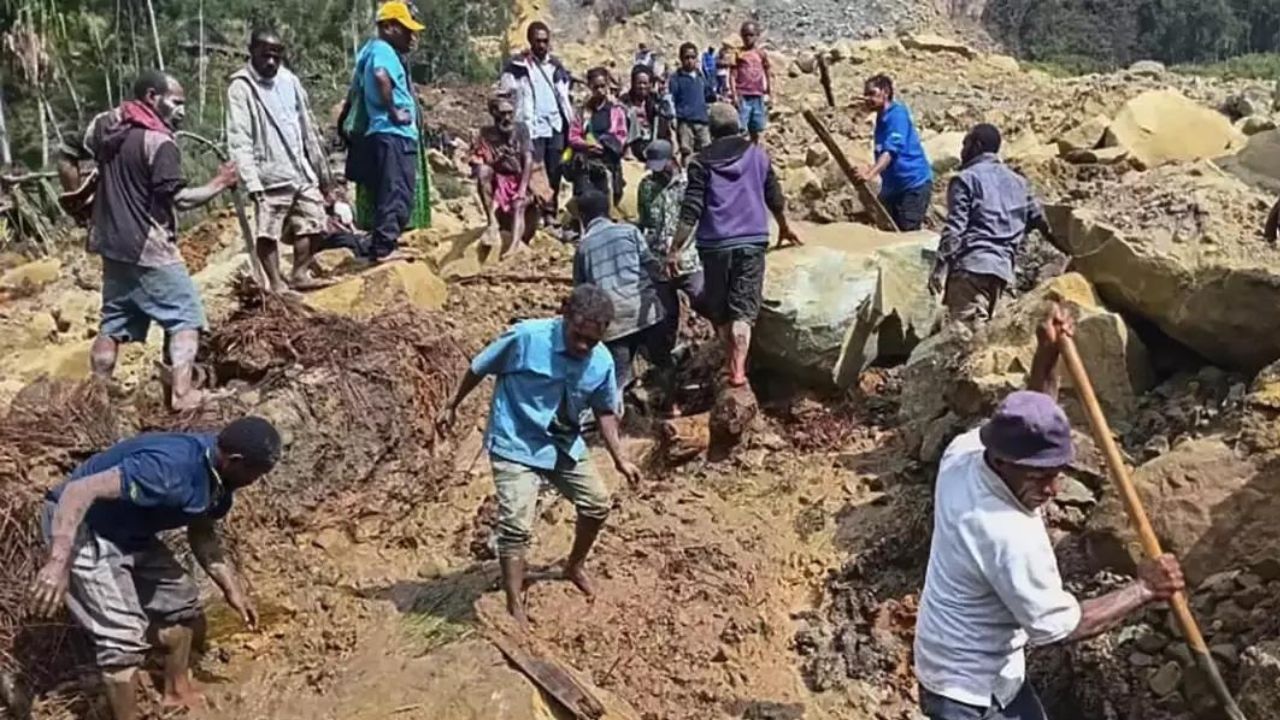Papua New Guinea Landslide Death Toll: Know More Here
According to a government representative in Papua New Guinea, the landslide on Friday may have buried over 2,000 people alive. The country has publicly requested assistance from other countries.

The UN estimated that 670 people were killed in the avalanche in the rugged interior of the South Pacific island nation; the government estimate is almost three times higher. So as of now, just six people’s remains have been found.
The acting director of the National Disaster Center of the South Pacific island nation, Luseta Laso Mana, wrote a letter to the UN resident coordinator on Sunday that The Associated Press was able to view. In it, he stated that the landslide at Yambali village in the Enga province had “buried more than 2000 people alive” and caused “major destruction.”
Since the tragedy, estimates of the death toll have fluctuated greatly, and it was not immediately evident how authorities arrived at the precise number of casualties.
In the absence of new information, the International Organization for Migration, which is collaborating closely with the government and spearheading the global response, has not modified the 670 estimated deaths that were reported on Sunday.
“We are not able to dispute what the government suggests but we are not able to comment on it,” said Serhan Aktoprak, the chief of the U.N. migrant agency’s mission in Papua New Guinea.
“As time goes in such a massive undertaking, the number will remain fluid,” Aktoprak added.
Yambali village and Enga provincial officials calculated that over 150 dwellings had been submerged by the landslide, which led to the 670 fatality toll. Sixty dwellings had been the projection from before.
James Marape, the prime minister of Papua New Guinea, did not answer to a request for clarification on the basis of the government estimate of 2,000 on Monday.
Due to tough conditions on the ground, such as the village’s remote position, a lack of telecommunications, and tribal conflict throughout the province, it is impossible to determine the extent of the tragedy. As a result, military escorts are required for foreign rescue workers and assistance convoys.
A significant barrier for relief workers is created when a 200-meter (650-foot) section of the province’s main route is buried beneath rubble 6 to 8 meters (20 to 26 feet) deep.
Mana predicted that the avalanche would significantly affect the nation’s economy.
“The situation remains unstable” due to the shifting ground, “posing ongoing danger to both the rescue teams and survivors alike,” Mana wrote to the United Nations.
The first large piece of heavy equipment brought in to assist the locals who have been searching for bodies with shovels and farming implements is an excavator that was provided by a local builder on Sunday. It’s dangerous to work around the still-shifting rubble.
Billy Joseph, the minister of defence for Mana and Papua New Guinea, travelled 600 kilometres (370 miles) northwest to Yambali on Sunday in an Australian military chopper to obtain a firsthand understanding of what is required.
Mana’s office posted a picture of Mana visiting Yambali and giving a local official a check for 500,000 kina ($130,000) to purchase supplies for the 4,000 displaced survivors.
Determining whether Papua New Guinea’s government needed to request further foreign support formally was the visit’s main goal.
The military of Papua New Guinea was moving earthmoving machinery 400 kilometres (250 miles) from the east coast city of Lae to the disaster site.
According to officials, traumatized locals are divided on whether or not to allow heavy machinery to dig up and maybe further injure the bodies of their buried relatives.


Comments are closed.